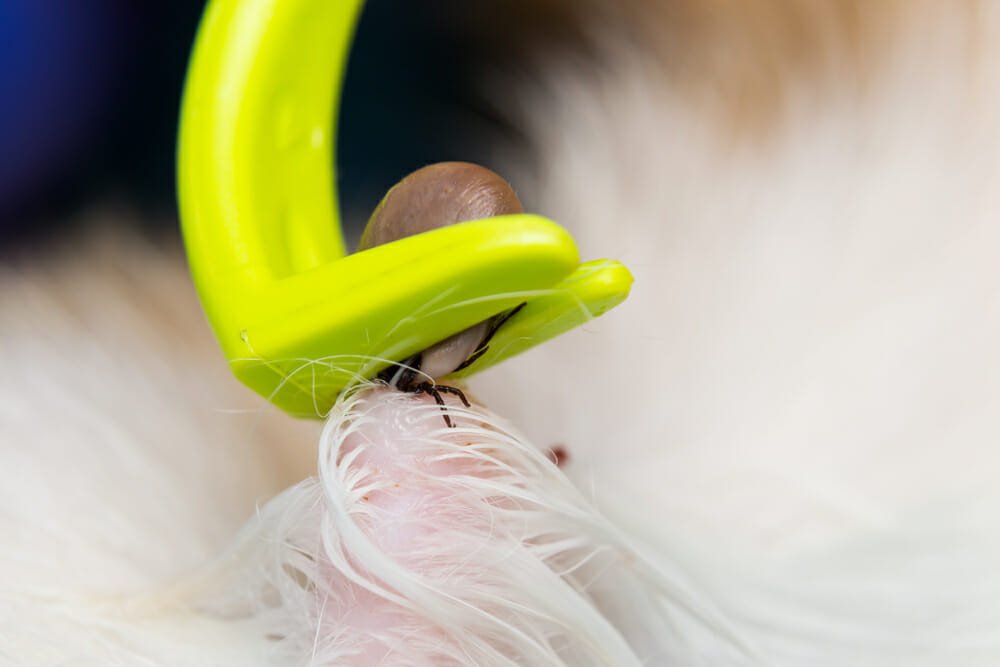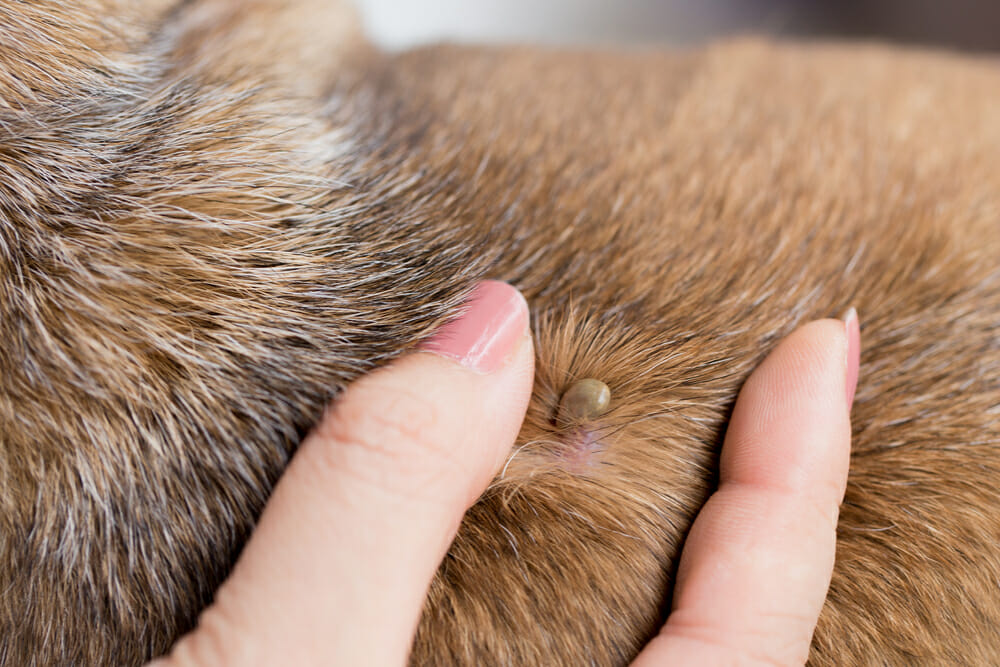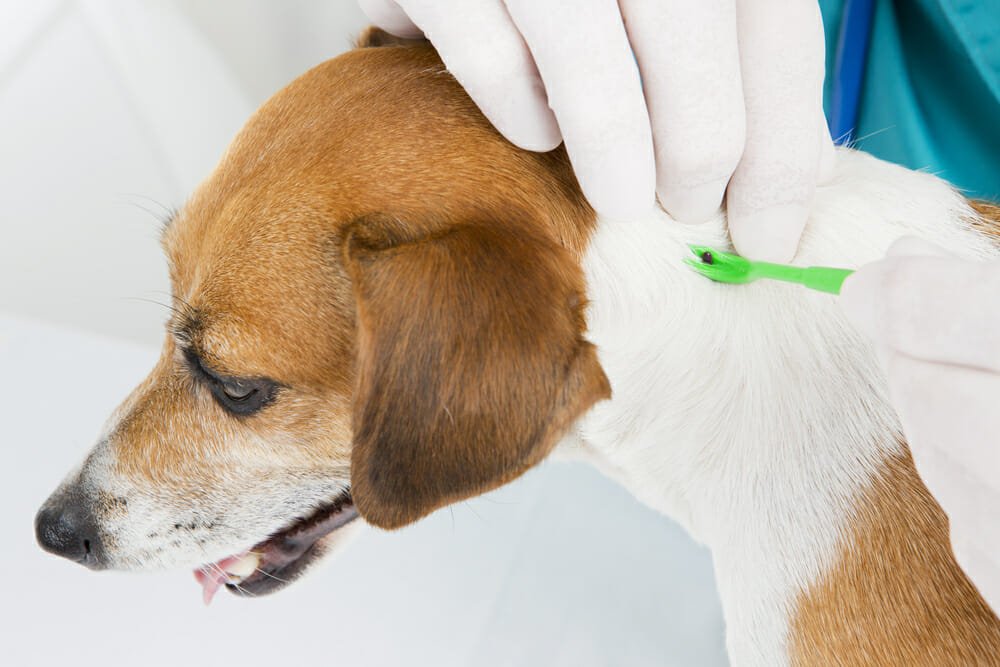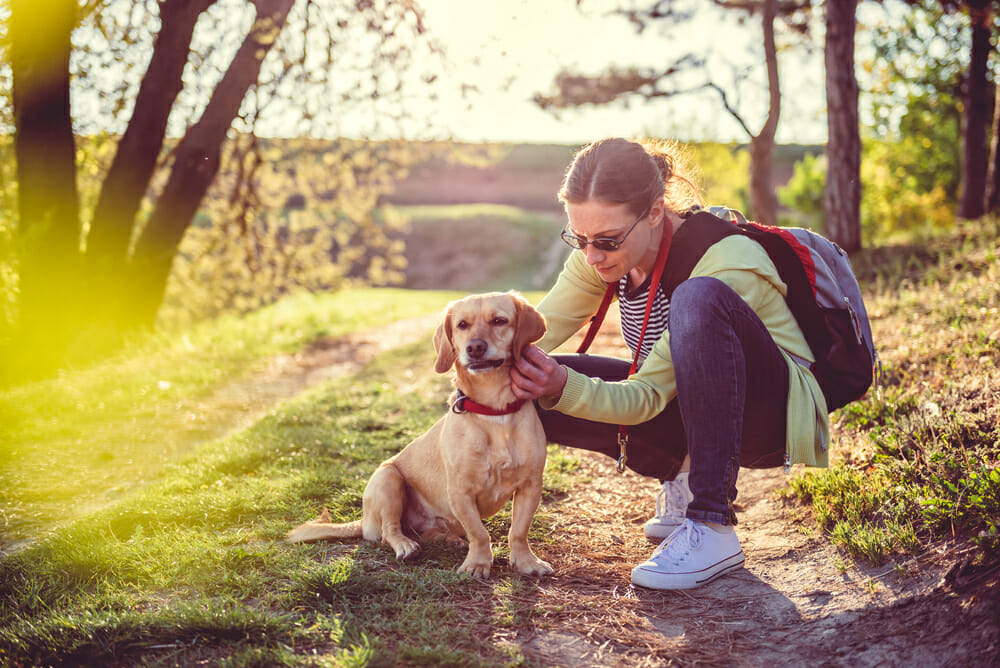“I found a tick on my dog, should I be worried?” Finding a tick on your dog can be scary! Even thinking about the possibility can make you anxious. Let’s talk about how to prepare, and what to do when you find one.
If you spend any time outdoors, ticks just aren’t something you can completely avoid – especially if your pup loves to run around and play outside. And who wants to deprive their dog of more playtime? With that in mind, it might be a good idea to prepare for the day you find a tick on your dog. That way, they can stay safe and still live their lives.

What are Ticks, And How to Identify Them
Ok, first things first… What the heck does a tick look like? And how can you keep an eye out?
PetMD says that “ticks are nasty parasites that feed on blood and transmit dangerous diseases to our pets.” Any dog can get a tick on them, just like humans. But dogs who spend a lot of time outdoors are most susceptible.
PetMD also says that ticks “latch onto dogs from the ground and crawl upward. Ticks are drawn to dark, moist areas on the body. It’s also important to note that dogs with longer hair give ticks more opportunities to hide.”


Here are some pictures to help you recognize what a tick looks like. Tick species vary from the size of a pinhead up to the size of a grape, and hide in your dog’s fur. So it’s important to do regular tick checks. “Look for a black, brown, or grayish-brown bug. You might only see the tick’s body, or you might see its legs too,” says WebMD.
How to Check Your Dog for Ticks:
1. You may want to check them outside to avoid bringing any ticks inside your home.
2. Use your fingers to gently pet your dog all over. Run your fingers through their fur and press gently to feel for any bumps.
3. If you feel a bump, carefully part your dog’s fur, so you can see what it is.
Where to Check Your Dog for Ticks
The short answer is…everywhere! But here are some specific spots you might not think of off the bat.
- Inside and behind their ear flaps
- Around their eyelids
- Under their legs (in the “armpit” areas)
- Between their toes
- On the bottoms of their paws
- Under their tail
- Around the groin area
- Around their neck and shoulders (under their collar)
How to Remove a Tick
Ok, now for the tough part. How do you remove a tick? If you’re nervous about doing it yourself, you can take your dog to the vet, and they’ll do it for you. And if you’re using a tick-removal kit, it will come with instructions on how to use it properly.

Supplies You’ll Need:
- Latex or rubber gloves
- Rubbing alcohol
- Antibiotic ointment or antiseptic liquid
- Good, sharp tweezers or a tick-removal tool (don’t use dull tweezers)
Steps to Remove a Tick:
The most important thing is that you remove the entire tick. And to stay calm the whole time. The tick isn’t running away. So although you want to get it off your dog as soon as possible, you also want to stay calm and concentrated while removing the tick.
1. With gloves on, spread your dog’s fur
2. Using tweezers, grasp the entire tick as close to your dog’s skin as possible
3. Gently pull the tick straight out in a slow, steady motion
4. Drop the tick into rubbing alcohol
5. Remove your gloves and wash your hands thoroughly
6. Clean the bite site with an antibiotic ointment, antiseptic liquid, or rubbing alcohol
7. Clean your tweezers or tool with a disinfectant
Tick Removal Myths
According to the CDC, we should avoid certain “folklore remedies” like the ones listed below.
- Painting the tick with nail polish or petroleum jelly.
- Using heat to make the tick detach from the skin.
- Trying to remove a tick with your fingers—you could accidentally break it in half.
- Flushing the tick down the toilet. This will just reintroduce that harmful tick into the waterways.
Most of us have heard about using nail polish or a flame. These methods don’t work, and they could actually make the situation worse. You want to remove the tick as quickly as possible—not wait around for it to detach.
How to Kill a Tick After Removal?
Sadly, you can’t just squish a tick like any other bug. Trust me – I’ve tried it. They are pretty invincible. The best way to kill them is to put them in rubbing alcohol in a sealed container or bag. And wrap it up tightly with tape.

What are the Signs of Illness from a Tick on Dogs?
Even after you successfully removed a tick from your dog, you’ll want to keep an eye on your dog and the removal site for the next few weeks. Some people will even keep the tick for identification or testing later on in case their dog shows signs of illness afterward.
Although, the CDC doesn’t recommend this because the laboratories that do tick testing aren’t required to have high quality control, and can give you false positives or negatives for disease.
Watch your dog for signs like:
- Joint soreness
- Fatigue
- Rashes
- Lameness
- Swollen lymph nodes
- Fever
- Loss of appetite
- Neurological problems
Tick Prevention for Dogs
The most important tick prevention is a tick prevention medicine. You can consult your veterinarian about which brand they recommend. And you can often find combination medicines like flea & tick prevention, all in one.
Additional tick prevention steps you can take:
- Perform frequent tick checks
- Vacuum your house regularly and dispose of the waste immediately
- Mow your lawn where your dog plays
- Wash your dog’s bedding and soft toys regularly
- Bathe your dog with a pesticide-free pet shampoo
Be Tick Aware
Ever heard the expression “be bear aware?” Well, the same goes for ticks. You don’t have to hide your dog away from playing outdoors. Just be aware, and be prepared. And everything will be ok!
Looking for other pet parenting articles? We’ve got you covered!




















